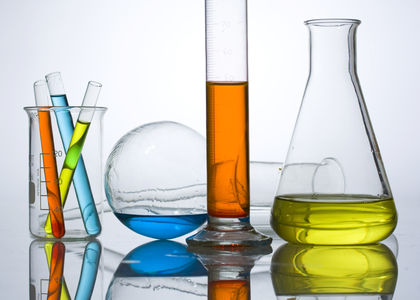Objective: Determine the effect of solute concentration on the colligative properties of an aqueous solution. (How does adding “stuff” to water affect the freezing and boiling point?)
Learning outcomes: Students will discover that by increasing the concentration of a solute in water, the freezing point of the solution will decrease and the boiling point will increase.
Time: 1/55-minute period
Materials:
For Experiment
- 16 oz. honey
- 1 100 mL beaker per pair
- 6 200 mL beakers (for stock solution)
- 1 thermometer per pair
- 1 hotplate per pair
Procedure:
Experiment
- Have 1.2 liters of 25% honey solution in the 200 mL beakers and set around the room.
- Assign 1/3 of the pairs to work with the stock solution as is, 1/3 to dilute it by half (25mL stock, 25 mL Deionized water), and 1/3 diluted by quarter (12.5 mL stock, 37.5 mL de-i. water).
- Students boil solutions and observe boiling points. Class comes together and combines data. Graph is compiled on the board. Discuss outliers with students.
Teacher notes:
- This is a green chemistry lab, which means that there are no negative environmental waste products. This is why honey is used. Refined sugar created a lot of dangerous waste during processing. Honey does not.
- Be sure that all students are familiar with hotplates/Bunsen burners and proper lab technique. In addition, safety goggles must be worn at all times.
- The class-generated graph should have the amount of honey on the x-axis and the boiling temperature on the y-axis. When the points are connected, there should be direct variation (i.e. as the amount of honey added increases, the boiling point increases).
Possible Extension
If you have access to a cold enough freezer, you can also experiment with freezing point depression. It is a little harder to determine the freezing point due to the fact that the freezing process is harder to observe. Careful measurement of the temperature will identify the freezing point through temperature plateaus. A similar graph will be the results. As more honey is added, the freezing point becomes lower.
Note – The freezing portion is not considered as green due to the energy used in the freezer and the potentially harmful coolants.
Source:
